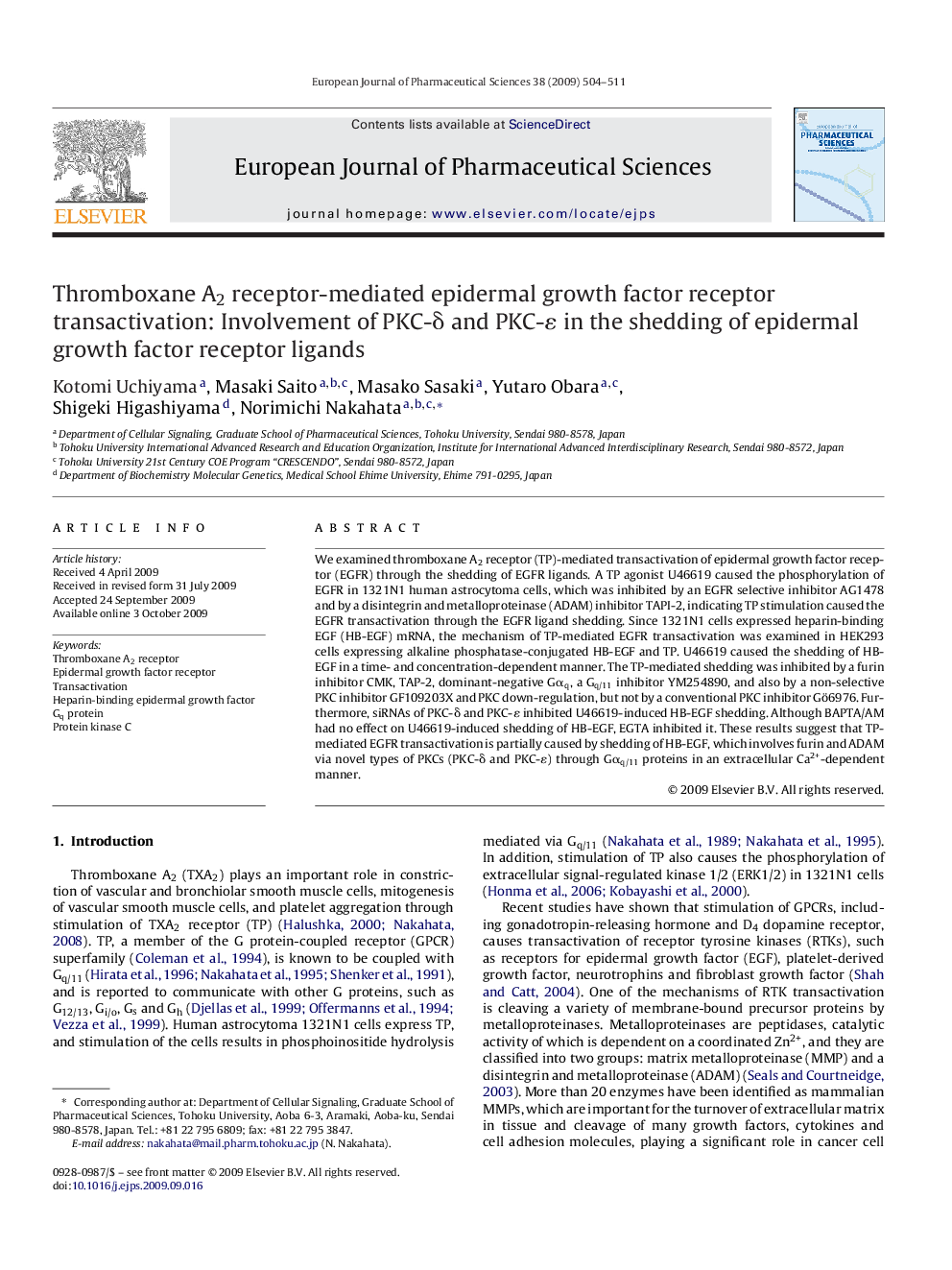| Article ID | Journal | Published Year | Pages | File Type |
|---|---|---|---|---|
| 2482180 | European Journal of Pharmaceutical Sciences | 2009 | 8 Pages |
We examined thromboxane A2 receptor (TP)-mediated transactivation of epidermal growth factor receptor (EGFR) through the shedding of EGFR ligands. A TP agonist U46619 caused the phosphorylation of EGFR in 1321N1 human astrocytoma cells, which was inhibited by an EGFR selective inhibitor AG1478 and by a disintegrin and metalloproteinase (ADAM) inhibitor TAPI-2, indicating TP stimulation caused the EGFR transactivation through the EGFR ligand shedding. Since 1321N1 cells expressed heparin-binding EGF (HB-EGF) mRNA, the mechanism of TP-mediated EGFR transactivation was examined in HEK293 cells expressing alkaline phosphatase-conjugated HB-EGF and TP. U46619 caused the shedding of HB-EGF in a time- and concentration-dependent manner. The TP-mediated shedding was inhibited by a furin inhibitor CMK, TAP-2, dominant-negative Gαq, a Gq/11 inhibitor YM254890, and also by a non-selective PKC inhibitor GF109203X and PKC down-regulation, but not by a conventional PKC inhibitor Gö6976. Furthermore, siRNAs of PKC-δ and PKC-ɛ inhibited U46619-induced HB-EGF shedding. Although BAPTA/AM had no effect on U46619-induced shedding of HB-EGF, EGTA inhibited it. These results suggest that TP-mediated EGFR transactivation is partially caused by shedding of HB-EGF, which involves furin and ADAM via novel types of PKCs (PKC-δ and PKC-ɛ) through Gαq/11 proteins in an extracellular Ca2+-dependent manner.
